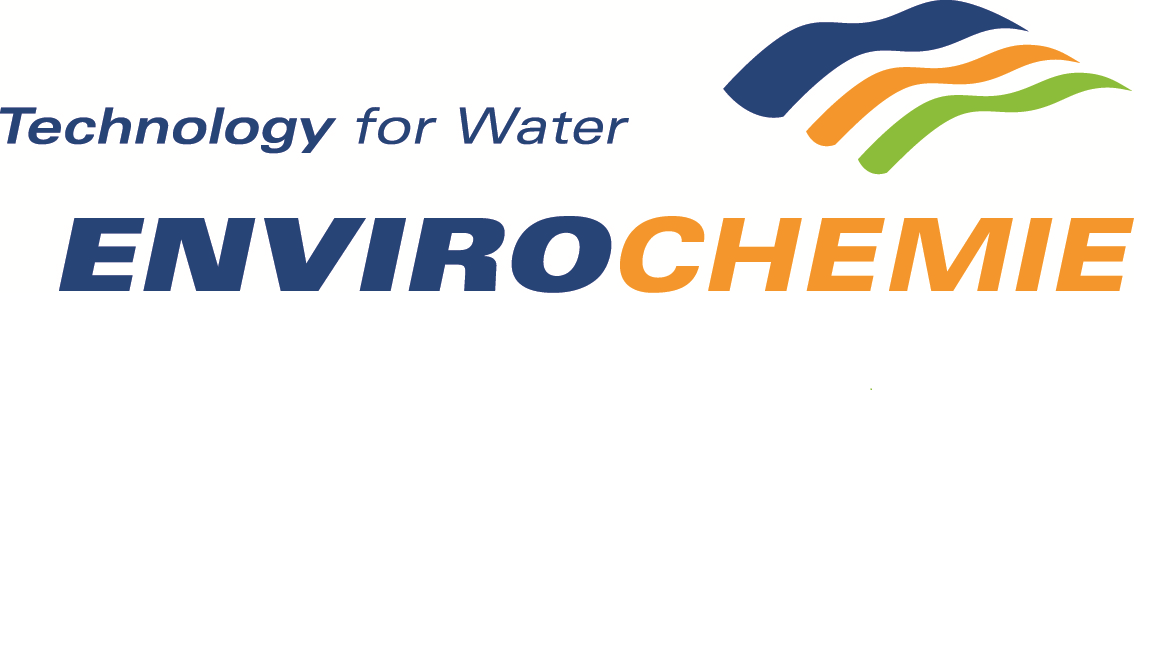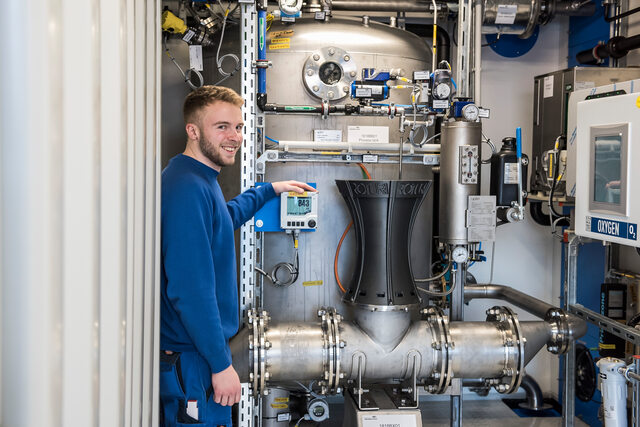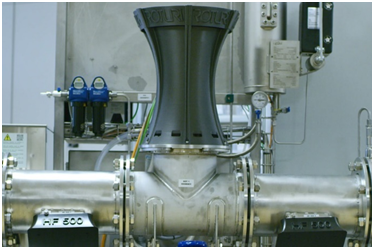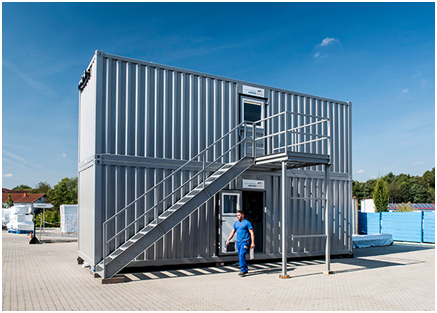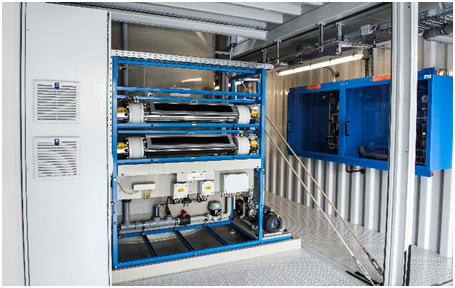By EnviroChemie GmbH
Cleaning pharma residues from wastewater
EnviroChemie offers a wide range of the advanced processes supported by analytical tools that are required to remove all toxic and polluting substances from fine chemical and pharmaceutical wastewater.
As more medicines are developed using ever more sophisticated substances, so treating pharmaceutical industry wastewater becomes increasingly challenging, as detailed in a new technical paper authored by EnviroChemie Head of Marketing & Communications, Jutta Quaiser.
A mounting problem
The paper notes that the problem is increasing in both scope and scale as the variety of medicines steadily expands and the overall quantity of pharmaceuticals consumed worldwide rises due to demographic and economic changes.
Residues of antibiotics, hormones and many other types of topical medication can potentially harm people and animals, especially when they accumulate in the environment over time.
Wastewater can become contaminated with residues of active pharmaceutical ingredients (APIs) both the results of production and afterwards from their consumption.
“A considerable portion of the medication is excreted and ends up in wastewater in unchanged form or as a degradation product,” explains EnviroChemie engineer and department head Elmar Billenkamp.
Lack of biodegradability
As a result, high concentrations of APIs contaminate wastewater in pharmaceutical plants and traces of the residues can ultimately also be found in municipal sewage treatment plants. They are generally not easily biodegradable. Therefore, the wastewater may not be discharged into sewage treatment plants without pre-treatment. If wastewater experts deem certain APIs to be ecotoxicologically harmful, they should be eliminated immediately at their source.
The pharmaceutical industry is therefore faced with the challenge of removing these residues from water effectively and cost-efficiently without harming the environment in the process.
“The tasks to be performed when treating wastewater from pharmaceutical production are becoming ever more diverse and we are also seeing ever more new active ingredients and applications,” says Billenkamp.
He cites the surfactant octoxynol 9 (trade name Triton X-100), which is used as a solution in many rapid tests for COVID-19, as a prime example of a substance that can suddenly present a completely new challenge for wastewater treatment. Octoxynol may not be released into wastewater, even in small quantities, due to its toxicity. As a result of the increased quantities of this material that are now being produced and sold, producers are now tasked with developing completely new solutions.
Eliminating problems at source
Wastewater treatment expertise has become indispensable to pharma manufacturers and fortunately, while requirements are becoming ever more stringent, analytical techniques are also continuously improving.
Billenkamp emphasizes: “We have the wastewater examined ecotoxicologically in special laboratories. For this, our Research & Development department works together with universities and institutes.”
The extent to which the wastewater needs to be cleaned is determined by what is known as the predicted no effect concentration (PNEC) value of a substance. This is the threshold level of a toxic substance in water below which it is proven to have no effect on the environment. Substances in water at below PNEC concentrations are therefore deemed acceptable, and the wastewater can be discharged.
Reducing carbon footprint
Different methods can be considered for pre-treating wastewater from pharmaceutical production, used separately or in combination.
Companies often have aqueous waste incinerated by external providers. This is highly cost-intensive, however, as the water must first evaporate before the solids can burn. This involves high energy consumption and considerable CO2 emissions, both from incineration and tanker transport.
EnviroChemie has also been working with companies from the pharmaceutical industry to develop sustainable alternatives to the thermal combustion of API-contaminated wastewater.
Physical procedures are also expensive. Residues in wastewater are filtered out using membrane technology or absorbed by activated carbon. Following this, the company must pay to dispose of these residual materials. Depending on the type of wastewater, however, these methods can be suitable in combination with other technologies.
AOP pretreatment
The main chemical problem is that many API substances consist of long-chain molecules that cannot be broken up by bacteria in the sewage treatment plants.
The last two decades have seen the emergence of ingenious advanced oxidation processes (AOPs) in which APIs or other substances that are not easily biodegradable are split into smaller organic fragments, using physiochemical processes.
For example, during oxidation, combining ozone or hydrogen peroxide (H2O2) with UV light creates OH hydroxyl radicals that quickly and strongly react with nearly all oxidizable substances, breaking down the complex molecules of the harmful substance down into smaller organic fragments that are no longer critical and can be cleaned biologically.
Selection of the most effective AOP depends on the type of wastewater and its components.
No two wastewaters the same
EnviroChemie wastewater experts test various processes for different pharmaceuticals in the company’s own labs and pilot plants to find the ideal solution.
“Most companies specialize in one procedure. However, we are not limited to a single procedure. Together with our customers, we develop the right water treatment method for each individual case,” says Billenkamp.
For example, EnviroChemie has collaborated with Roche and IUTA (Institute for Energy and Environmental Technology) in Duisburg to develop a procedure for removing traces of pharmaceutical substances from the wastewater of a new production plant in Mexico. One of these substances was the anti-cancer substance capecitabine, which had been classified as ecotoxicologically critical following analyses. In this case, an ozone oxidation AOP scored ahead of UV/H2O2 and activated carbon, particularly in terms of its ecological and economic aspects. It was first tested in the laboratory before being implemented on an industrial scale.
Analyzing wastewater again and again
Fine tuning treatments to the exact composition of wastewater is a highly technical but also trial and error process, with a complex set of variables to be tested, such as required concentrations of hydrogen and peroxide, possible need for pre-filtration of fillers or excipients, duration of oxidation treatment, and strength of UV lamps needed.
“We have to analyse the composition of the wastewater repeatedly for every project and adapt our treatment accordingly,” Billenkamp explains.
Perfecting the ideal plant solution requires the expertise of a full team of specialists for every project. In this way, EnviroChemie employees collect experience on the optimum use of resources for many different wastewater types, while at the same time its R&D Team enhances new technologies and existing processes.
Alongside the method adapted to the wastewater, the right dosage and the duration of treatment, the treatment of wastewater can also be optimised by fine-tuning process engineering aspects.
EnviroChemie belongs to the EnviroWater Group, a specialist network of companies, which means it is well positioned when it comes to wastewater treatment. For example, up2e! has developed the Roturi® process for applications with ozone, which allows ozone to be used particularly efficiently for removing API residues.
“The processes are designed in such a way that they can be flexibly adapted when the composition of the wastewater changes and they should pay for themselves over the long term.” Mr. Billenkamp concluded.
Resources
Click on EnviroChemie water treatment for the pharma Industry to learn more.
Click on Envochem AOP – Advanced Oxidation Processes for further information.

